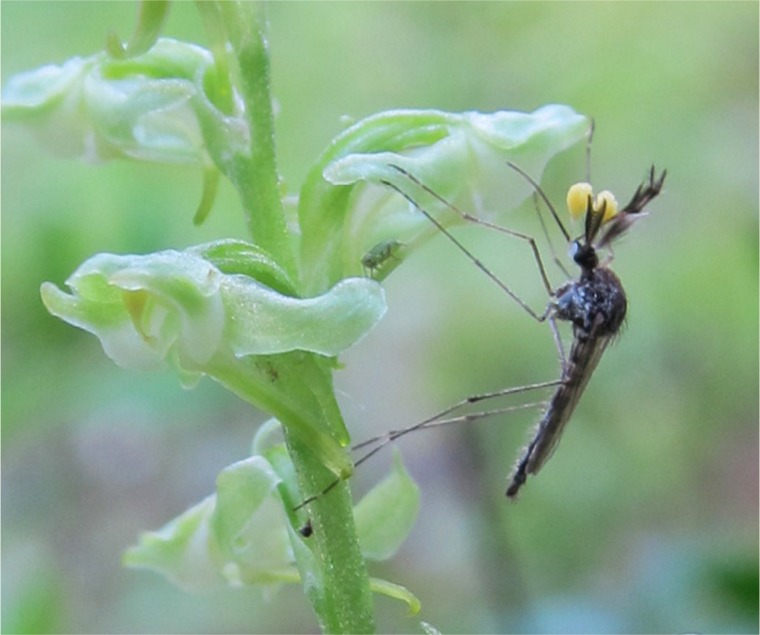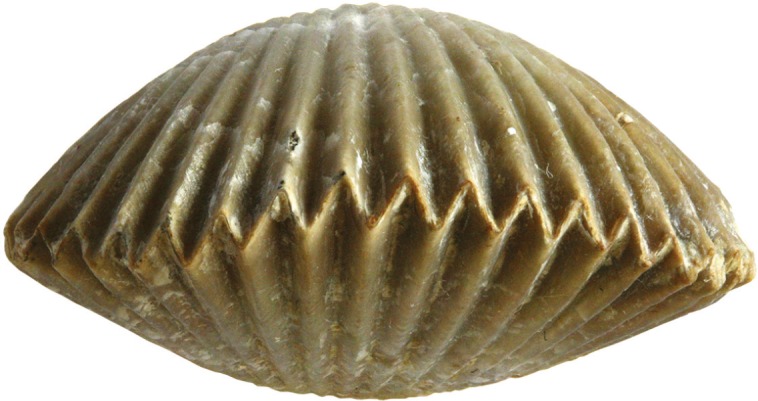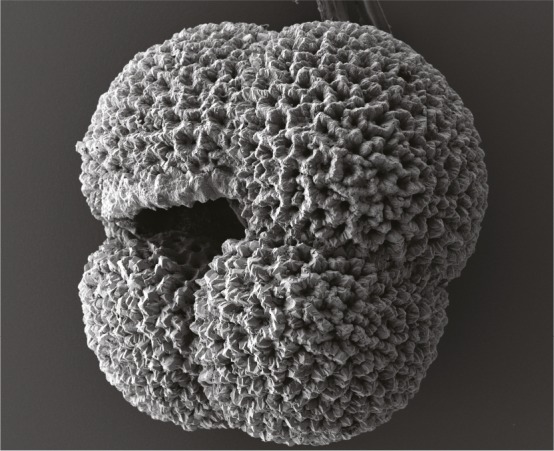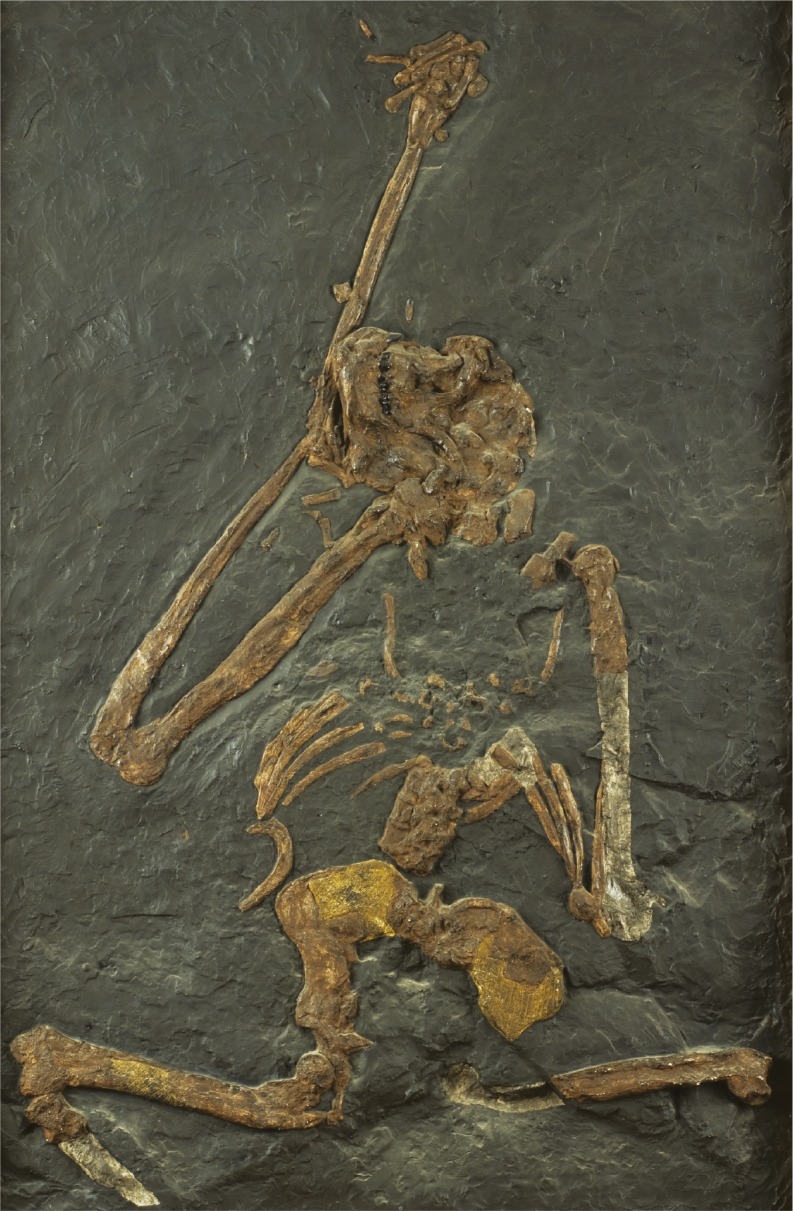Neural mechanisms of nectar seeking in mosquitoes

Aedes mosquito with pollinia from the P. obtusata orchid attached to its eyes.
Mosquitoes are major vectors of diseases, such as dengue, malaria, and Zika. Research on the ecological importance of mosquitoes has focused on vector–host interactions, but relatively little is known about the odor cues and neural mechanisms that lure the insects to pollinate and acquire nectar sources of nutrients from plants. Chloé Lahondère et al. (pp. 708–716) conducted pollination experiments and chemical analysis of floral odors, examined behavioral responses of Aedes mosquitoes to scents emitted by different Platanthera orchid species, and used calcium imaging to record neural responses in an olfactory brain region called the antennal lobe. The mosquitoes both pollinated and were attracted to the Platanthera obtusata orchids, which emit a scent consisting of relatively high levels of the compound nonanal. This odor produced strong responses in an antennal lobe structure called the LC2 glomerulus, while inhibiting activity in the AM2 glomerulus. By contrast, other Platanthera species not visited by the mosquitoes emitted scents consisting of relatively high levels of the compound lilac aldehyde. Compared with nonanal, the unattractive odors evoked the opposite pattern of neural responses in AM2 and LC2. According to the authors, the findings illuminate the sensory underpinnings of mutualism between mosquito pollinators and nutrient-providing plants. — J.W.
On-skin, passive-cooling electronics

Multifunctional on-skin electronics with passive-cooling capabilities.
On-skin electronics with thermal management capabilities for body temperature regulation can improve user comfort and reduce energy consumption. Most such devices rely on joule heating, with comparatively little research into the use of passive cooling. Yadong Xu, Bohan Sun, Yun Ling, et al. (pp. 205–213) developed on-skin electronic devices with effective passive-cooling capabilities along with other favorable attributes. The substrate for the devices was an elastomer, polystyrene-block-poly(ethylene-ran-butylene)-block-polystyrene, with a multiscale porous structure. The porous elastomer structure reflected sunlight effectively while allowing radiative body heat loss, leading to passive cooling of approximately 6 °C relative to exposed skin. The material was also highly hydrophobic with a high water vapor transmission rate, making it both breathable and waterproof. By spray printing silver nanowires onto the elastomer substrate, the authors were able to fashion various on-skin bioelectronic devices, such as electrophysiological, temperature, hydration, and pressure sensors and electrical stimulators. The devices demonstrated comparable performance to conventional electronic devices for the same functions. Notably, the devices could be dissolved in an organic solvent and recycled, thereby reducing electronic waste and manufacturing costs. Such technology could form the basis for smart textiles with passive-cooling capabilities, according to the authors. — B.D.
Decoding a mathematical mystery of interlocking shells

Interlocking of the 2 valves in the brachiopod fossil Kutchirhynchia obsoleta.
The 2 sides of oyster shells and those of other bivalves fit together seamlessly, protecting the animal inside and continuing to match up precisely even when environmental influences or injuries perturb the shell’s shape as it grows. Derek Moulton et al. (pp. 43–51) investigated how the interlocking edges develop physically by creating a mathematical model of shell growth. The shell edges of bivalves and brachiopods grow throughout the animal’s life, each half secreted by a different part of the mantle. The authors considered the geometry and mechanics of each half of the mantle, which are constrained by the influence of one lobe on another and the rigid nature of the shell secreted. The model reveals that a toothed or wavy edge, as opposed to a flat edge, occurs when the mantle grows faster than the shell edge, causing it to buckle. The interlocking pattern is then created and maintained because the mechanical buckling instability is biaxially constrained. In addition, the intricate patterning on some brachiopods is due to a secondary mechanical instability, according to the authors. — T.H.D.
Threshold for Greenland Ice Sheet collapse

Microfossil from the seafloor near Greenland, used to reconstruct past temperatures. Image courtesy of Irene Heggstad (University of Bergen, Bergen, Norway).
The complete melting of the Greenland Ice Sheet (GIS) could contribute up to 7 m of global sea-level rise. Understanding the GIS response to past interglacial periods could help determine its response to future warming, but climate records around Greenland during past interglacials are sparse. Nil Irvalı et al. (pp. 190–195) used data on multiple temperature proxies from marine microfossils to reconstruct sea surface temperatures (SSTs) at a site off southern Greenland during 4 interglacial periods, spanning the past 450,000 years. SSTs were as warm or warmer than at present during all 4 previous interglacials, with mean summer SSTs ranging from 7–11 °C, compared with the modern value of 7.7 °C. Sediment records suggest that the most complete deglaciation of southern Greenland occurred during one of these interglacials that was only slightly warmer than the present, whereas ice persisted on southern Greenland during the warmest interglacials. However, during the period with the strongest deglaciation, temperatures exceeded present levels longer than for any of the other interglacials, suggesting that the duration of warming influences the fate of the GIS. The results suggest that the warming threshold for significant GIS retreat could be less than 1 °C above the present, within the range of projected values for this century, according to the authors. — B.D.
Intergenerational mobility in the United States
The United States is often characterized as a land of opportunity, but how social mobility changes over generations is unclear. Xi Song et al. (pp. 251–258) examined intergenerational occupational mobility in the United States using census and survey data linking roughly 5 million occupational records largely pertaining to white men born in the United States between 1830 and 1980. The authors found that intergenerational mobility has declined since 1850, in line with a transition from a largely agricultural to an industrial nation. For example, more than 57% of men born in the 1800 birth cohort were farmers, whereas 13% of men born in the 1900 birth cohort were farmers, despite population growth. Further, the majority of occupations since the 1800s have experienced relative decline in status due to the expansion of high-status occupations over time. Only a few occupations, such as architect, health professional, engineer, jurist, and scientist, retained stable percentile ranks. Individuals born before 1900 experienced increased mobility relative to their fathers, and as industrialization and the transition from an agricultural economy slowed, individuals born after 1940 experienced less upward mobility than previous generations. The findings suggest that prospects for high-status occupations have worsened for recent generations, according to the authors. — M.S.
Locomotion in Late Miocene hominoid

O. bambolii skeleton.
The skeleton of Oreopithecus bambolii, a hominoid from Europe dating from 8.3 to 6.7 million years ago in the Late Miocene, is more complete than that of any nonhominin hominoid. However, the kind of locomotion used by this species is unclear. By examining the pelvic and lumbar anatomy of an O. bambolii skeleton and other fossils, Ashley Hammond et al. (pp. 278–284) found that this species was not capable of efficiently walking on 2 legs and was also not optimized for climbing like living great apes. The results show that the lower torso in O. bambolii differed from those of known fossil and living hominoids. O. bambolii lacked features that may have enabled the appropriate spine curvature and pelvic stabilization during upright walking. For example, the species did not have a hominin-like protruding anterior inferior iliac spine, a bony eminence on the hip bone; short lower ilium, the uppermost part of the hip bone; or muscular configuration to maintain trunk stability during bipedal gait. However, O. bambolii lacked the extreme adaptations for pelvic and lumbar rigidity associated with forelimb-dominated climbing in living great apes. According to the authors, these findings provide key information that could shed light on hominoid evolution. — J.W.


